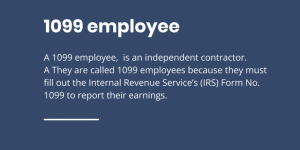Updated November 25, 2025
Documenting Sexual Harassment Investigations: A Step-by-Step Legal Guide
Did you know that 75% of workplace sexual harassment incidents go unreported? And when cases do come forward, many fail due to inadequate documentation.
Sexual harassment investigations require meticulous record-keeping from the initial complaint through the final resolution. Unfortunately, many employees and organizations struggle to document these sensitive cases properly, leaving them vulnerable to legal challenges and potentially allowing harassment to continue.
When handled correctly, thorough documentation serves multiple critical purposes: it protects the rights of all parties involved, creates a transparent investigation process, and provides crucial evidence if legal action becomes necessary. Furthermore, proper documentation demonstrates that your organization takes harassment seriously and has followed appropriate protocols.
Without systematic documentation procedures, investigations can quickly become compromised. Witnesses' memories fade, evidence disappears, and the credibility of the entire process comes into question.
This comprehensive guide will walk you through the essential steps of documenting sexual harassment investigations – from understanding what constitutes harassment to creating effective investigation reports that withstand legal scrutiny. Whether you're an HR professional, manager, or workplace investigator, these guidelines will help you conduct thorough, fair, and legally sound investigations.
Understanding What Constitutes Sexual Harassment
Before launching any sexual harassment investigation, investigators must clearly understand what legally constitutes this offense. According to the Equal Employment Opportunity Commission (EEOC), sexual harassment includes unwelcome sexual advances, requests for sexual favors, and other verbal or physical conduct of a sexual nature that affects employment conditions or creates a hostile work environment [1].
Types of workplace sexual harassment
Sexual harassment typically falls into two distinct legal categories:
Quid pro quo harassment occurs when employment benefits are explicitly or implicitly conditioned on submission to sexual advances [1]. The Latin term literally means "this for that," representing a clear exchange—such as a promotion offered in return for sexual favors. This form primarily involves someone with authority using their position to solicit sexual conduct [2]. Notably, a single quid pro quo incident may constitute harassment if linked to employment benefits [3].
Hostile work environment harassment develops when unwelcome sexual conduct is sufficiently severe or pervasive that it creates an intimidating, offensive, or abusive workplace [1]. Although, recently some jurisdictions have removed the "severe or pervasive" requirement, making a single incident potentially actionable [4]. The behavior must be both subjectively offensive to the victim and objectively offensive to a reasonable person [5].
Examples of verbal, physical, and visual misconduct
Sexual harassment manifests in various forms:
Verbal/Written Misconduct:
- Sexually explicit jokes or comments
- Unwelcome requests for dates or sexual favors
- Sexual innuendos or sexually degrading language
- Spreading sexual rumors
- Inappropriate comments about appearance or body parts
Physical Misconduct:
- Unwanted touching, hugging, or massaging
- Blocking someone's movement
- Brushing against someone intentionally
- Standing unnecessarily close
- Sexual assault in severe cases
Visual/Non-verbal Misconduct:
- Displaying sexually explicit images or objects
- Leering or making suggestive facial expressions
- Sending inappropriate texts or emails
- Making sexual gestures
- Following someone [2]
Additionally, harassment need not be motivated by sexual desire—it can be based on gender identity, sexual orientation, or pregnancy [6]. Both men and women can be victims or harassers, and the parties can be of the same gender [1].
Why clear definitions matter in investigations
Clear definitions provide essential guidance for several reasons:
First, they establish objective standards that help investigators distinguish between appropriate workplace interaction and harassment. A single unwelcome touch might constitute harassment in some circumstances, while isolated verbal comments might not unless exceptionally severe [4].
Second, precise definitions help investigators focus on key elements—particularly whether the conduct was "unwelcome." The victim's perception matters significantly; however, the offensive conduct must also be something a reasonable person would find inappropriate [3].
Third, proper categorization affects how investigations proceed. For instance, quid pro quo allegations typically require examining power dynamics between parties, while hostile environment claims often involve assessing the frequency and severity of behavior [3].
Finally, clear definitions create consistency across investigations. Sexual harassment manifests differently across workplaces—consequently, having standardized definitions ensures all complaints receive fair, thorough evaluation regardless of industry or organizational culture.
By understanding these definitions thoroughly, investigators can properly document and evaluate all relevant behaviors, creating investigations that withstand legal scrutiny while protecting everyone involved.
How to Document Incidents Effectively
Proper documentation forms the backbone of successful sexual harassment investigations. Victims who maintain detailed records of incidents strengthen their position considerably, turning "he-said, she-said" situations into substantiated claims with clear evidence.
Start a detailed harassment log
Creating a dedicated system for documenting harassment incidents is essential, not merely random note-taking. Initially, choose a method that works best for your situation—a private notebook kept at home, a password-protected digital document, or a secure app that isn't accessible from your work computer [7]. The key is selecting something you can access quickly and consistently, especially during stressful situations [8].
Start documenting as soon as you believe you've experienced sexual harassment, even if you have no immediate plans to file a complaint or aren't certain whether something constitutes harassment [9]. Recording incidents promptly ensures your recollection remains fresh and accurate, which proves invaluable if you later decide to take action [10].
Include dates, times, and locations
Every harassment log entry should contain specific temporal and spatial details. Document the exact date and time of each incident as precisely as possible [11]. Note the physical location where the harassment occurred—whether in an office, break room, during a Zoom call, or elsewhere [10].
Organizing this information chronologically creates a timeline that demonstrates patterns of behavior, which can be crucial for establishing the persistent nature of harassment [12]. Moreover, this chronological documentation helps show the evolution of the harassment over time [9], potentially revealing escalation that might otherwise go unnoticed.
Describe actions and emotional impact
When documenting incidents, be specific about what was said or done. Instead of writing general statements like "John was inappropriate," record the exact behavior: "John made sexually explicit comments about my appearance in front of three colleagues during the team meeting" [8]. Use factual, objective language rather than emotional interpretations or assumptions about the harasser's motives [10].
Beyond describing the incident itself, document its impact on you professionally and emotionally. Note if the harassment affected your ability to work effectively [10], led to missed opportunities or declined assignments [8], or caused specific emotional responses. Sexual harassment can lead to anxiety, depression, sleep disorders, decreased job satisfaction, and other significant psychological effects [13]. These documented impacts strengthen your case by showing real harm.
Note any witnesses present
Identifying witnesses is critical for corroborating your account. For each incident, record:
- Names and job titles of anyone present
- Their position relative to the incident (what they could see or hear)
- Their immediate reactions (did they look uncomfortable or concerned?)
- Any comments they made following the incident [8]
Even if witnesses didn't observe the entire interaction, document what portion they might have seen [8]. Remember that some witnesses may not realize they've witnessed harassment [12], so include anyone present during an incident regardless of their awareness.
After documenting witness information, consider whether getting written statements from these individuals soon after an incident would be helpful, as this ensures memories remain fresh [14]. Obviously, witness testimony can transform isolated complaints into substantiated legal claims, especially when direct observers provide detailed accounts [15].
With proper documentation in place, you'll be better positioned to proceed with gathering and preserving tangible evidence—the next crucial step in building a strong sexual harassment case.
Gathering and Preserving Evidence
Beyond creating a harassment log, collecting tangible evidence strengthens sexual harassment investigations immensely. Indeed, preserving physical and digital materials transforms vague allegations into concrete cases that withstand legal scrutiny.
Save emails, texts, and written notes
Written communications often provide the strongest evidence in sexual harassment cases. Preserve all relevant messages including emails, text messages, social media interactions, internal company messages, and handwritten notes [1]. These communications create an unambiguous record of what transpired, complete with timestamps that verify when incidents occurred [16].
Never delete harassing messages, even if they contain disturbing content [16]. In fact, abusers frequently send dozens or hundreds of unwanted texts and emails, creating substantial evidence of their behavior [17]. When saving these communications:
- Capture entire conversations rather than isolated messages to provide complete context
- Include contact information of the sender (phone number, email address, profile) to verify identity
- Preserve the original format whenever possible to maintain authenticity
- Forward copies to personal accounts if the harassment occurs through work channels [18]
Importantly, these preserved messages can demonstrate that you explicitly asked the harasser to stop their behavior, establishing the unwelcome nature of the conduct [19].
Take photos of offensive materials
Visual evidence strengthens sexual harassment claims substantially. When encountering inappropriate materials in your workplace:
First, photograph any physical items like offensive drawings, inappropriate printed materials, or handwritten notes [3]. Capture clear images showing both the offensive content and contextual information about where it appeared.
Second, immediately take screenshots of any inappropriate digital content before it can be deleted or modified [2]. This applies to offensive images shared in workplace messaging platforms, inappropriate social media posts, or any visual content that creates a hostile environment [1].
Third, document any physical gesture or visual harassment by noting specific details in your harassment log immediately after it occurs, including exact descriptions of what you saw [1].
Secure digital backups of communications
Creating secure backups prevents evidence from being lost, deleted, or tampered with during investigations. This step remains essential because perpetrators may attempt to destroy evidence once they realize a complaint has been filed [18].
Store evidence on devices that the harasser cannot access [17]. Change passwords on all relevant accounts and devices to prevent unauthorized access to your evidence [17]. For critical evidence, consider creating multiple backups stored in different locations [2].
For technical evidence like metadata (which can prove message origins), consult with an attorney who may employ computer forensics techniques to extract and preserve this information properly [20]. These specialists can forensically extract text messages, documents, and digital communications while filtering out irrelevant information [21].
The evidence you gather may ultimately prove decisive in demonstrating patterns of behavior, establishing timelines, and confirming the severity of the harassment you experienced. Thorough preservation of evidence supports both internal workplace investigations and any subsequent legal proceedings that might become necessary.
Steps to Conduct a Legal Investigation
Prompt action following a sexual harassment complaint is vital to protect both the accuser and the organization from potential harm. A thorough, systematic investigation process helps uncover facts while safeguarding everyone's rights.
Report the complaint to HR or management
Once sexual harassment is reported or observed, management must act immediately. Employers cannot legally ignore potential harassment, even without a formal complaint [22]. Managers and supervisors are obligated to report any complaints or observed harassment to HR without delay [23]. This immediate reporting ensures proper handling and demonstrates the organization's commitment to addressing misconduct. Documentation of when and how the complaint was reported creates a verifiable record that shows responsible action from the start [24].
Assign a neutral investigator
To reduce bias, investigators should have no relationship with the complainant, the subject of the allegation, or any witnesses [4]. Appropriate investigators might include:
- An HR professional with proper training
- An external consultant or attorney (particularly for serious allegations)
- A senior manager not involved in the dispute [25]
For smaller organizations where finding unbiased internal investigators proves difficult, external investigation teams may be necessary to ensure fairness [4]. The investigator must remain objective, discreet, and thorough throughout the process [25].
Interview complainant, accused, and witnesses
Begin by interviewing the complainant, followed by the alleged harasser, then any witnesses. Schedule these meetings in private locations away from other employees and management [4]. When conducting interviews, have two investigators present when possible—one to ask questions while the other takes notes [4].
Treat all interviewees with respect, yet recognize that interviewing victims requires special care. Walker stresses that "every time they interview a victim, they are revictimizing that person" [6]. Provide tissues, water, and opportunities for breaks during difficult questioning [6].
Maintain confidentiality throughout
Throughout the investigation, protect both the complainant and the alleged harasser by maintaining strict confidentiality [4]. Share information only on a need-to-know basis [4]. Yet, remember that complete confidentiality may conflict with legal obligations, as noted by the EEOC and NLRB [5].
Explain your company's anti-retaliation policy to everyone involved and encourage reporting of any retaliatory behavior [4]. This protection against retaliation should be among your top priorities alongside confidentiality [4].
Creating and Using the Final Investigation Report
The final investigation report serves as the culmination of your sexual harassment inquiry, documenting all findings and supporting your conclusions. This critical document often becomes the foundation for organizational actions and potentially legal proceedings.
Summarize findings and evidence
After completing interviews and gathering evidence, create a comprehensive written report that objectively summarizes all relevant information. The document should detail the allegations, investigation methodology, and evidence collected. Organize findings chronologically or by allegation type, presenting both inculpatory and exculpatory evidence. Necessarily, investigators must include all evidence directly related to the allegations, regardless of whether it supports the conclusion [26].
Assess credibility of all parties
Credibility assessments form the cornerstone of effective sexual harassment investigations. Document your reasoning behind determining which witnesses were credible based on factors including corroboration, plausibility, consistency of statements, potential bias, and demeanor [27]. Investigators must assess credibility on an individual basis, never determining credibility based solely on a person's position as employee or manager [27]. Subsequently, explain specifically why certain accounts were deemed more reliable than others.
Recommend corrective actions
Based on substantiated findings, recommend appropriate corrective measures proportional to the seriousness of the violation [28]. These may include warnings, training, transfer, demotion, or termination [28]. Effective recommendations should address three objectives: stopping the harassment, correcting its effects on the complainant, and preventing recurrence [28]. Document these suggestions clearly, coupled with implementation timelines.
Share results with involved parties
Following investigation completion, provide appropriate information to both complainant and respondent. While maintaining necessary confidentiality, share substantiated or unsubstantiated determinations [29]. For substantiated cases, outline disciplinary actions being implemented [30]. Nonetheless, protect identities and sensitive details except as reasonably necessary [30]. This balanced transparency demonstrates commitment to addressing misconduct while respecting privacy concerns.
Conclusion
Properly documented sexual harassment investigations protect both employees and organizations from potential legal complications. Throughout this guide, we've explored the critical components needed to create comprehensive, defensible records of these sensitive workplace matters.
First and foremost, understanding what legally constitutes sexual harassment provides the foundation for any effective investigation. Additionally, maintaining detailed harassment logs with specific dates, descriptions, and witness information transforms vague complaints into substantiated cases. These contemporaneous records prove invaluable when cases progress to formal proceedings.
Evidence preservation remains equally crucial. Text messages, emails, photos, and other tangible proof must be securely backed up and protected from tampering. This documentation, when combined with properly conducted interviews and confidentiality protections, creates a fair investigation process that respects everyone's rights while uncovering facts.
The final investigation report ties everything together by summarizing findings objectively, assessing credibility thoughtfully, and recommending appropriate corrective actions. This document often becomes the definitive record if legal challenges arise later.
Remember, sexual harassment investigations require meticulous attention to detail at every stage. Organizations that implement robust documentation practices demonstrate their commitment to addressing misconduct while protecting themselves from liability. Though documenting these sensitive matters requires significant effort, the alternative—poorly documented investigations that fail to resolve harassment or withstand legal scrutiny—ultimately proves far more costly.
Following these guidelines helps ensure your investigations remain fair, thorough, and legally sound. Each properly documented case not only addresses immediate concerns but also contributes to creating safer workplaces where harassment simply cannot thrive.
If you need workplace harassment litigation, please call Setyan Law at (213)-618-3655. Free consultation.






